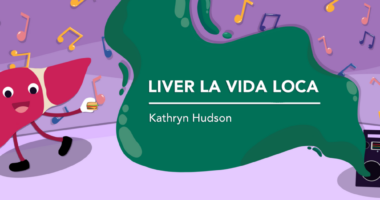The Alagille syndrome symptoms in my son’s face don’t define him
He's much more than the common facial features of his disease

When we had our two boys, my wife, Dani, and I would debate which of us they’d look like the most. It was a fun, lighthearted game because deep down we knew that regardless of whom they resembled more, we’d love them unconditionally.
When our youngest son, Finley, was diagnosed with Alagille syndrome and we learned that he might never look like us, it took away the fun from our guessing game.
We had a steep learning curve when we first learned about Alagille syndrome. It affects those who have it in many ways. Someone can be born with Alagille syndrome, lead a “normal” life, and have no idea they have it because their health complications are so minor. Others, however, may not make it past a few weeks.
We became focused on the scary medical components of Finley’s new diagnosis. But one that stood out to us in those early days was when the doctor said he may never look like the rest of his family or peers.
Most of us love our children regardless of how they look, but that news was challenging for us. Everything we were learning was tough to hear and process. But this possibility hit us particularly hard.
Alagille syndrome affects each patient differently, but some facial features tend to show up consistently. The website of Boston Children’s Hospital says these include “a pointy chin, broad brow, and widely spaced eyes.” Finley has those features, but if you don’t know he has Alagille syndrome and what that means, you probably wouldn’t notice them, at least not immediately.
While the resemblance topic was hard for me to face, the worry I had was more about how others would treat him because of his looks. He’s going to be smaller than his peers because of this liver disease. Coupled with different facial features, what might the kids at school say when he gets there? I’m hopeful it won’t be a problem, but I’d be lying if I said I never thought about it.
Finley is now 3 years old, and I see a lot more family resemblance than we were cautioned to expect. I joke about the fact that he’s lucky I have such a big, round head to help round him out a bit. But Alagille features or not, Finley is one darn cute little kid. I may be biased, but once you see the joy in his smile, I’m sure I can persuade you to feel the same.
As Finley has aged, my worries about how he’ll be treated by others have evolved. I now feel a general worry as a parent wanting his kid to be accepted and treated kindly. His Alagille diagnosis is a part of his story, as are his features, but we’ll work to control what we can. He may be small, but he sure doesn’t act like it. We’re teaching him to be kind, honest, determined, and brave.
His features will never define him, he’ll get to write his own story, and we’ll be with him the whole way.
Note: Liver Disease News is strictly a news and information website about the disease. It does not provide medical advice, diagnosis, or treatment. This content is not intended to be a substitute for professional medical advice, diagnosis, or treatment. Always seek the advice of your physician or other qualified health provider with any questions you may have regarding a medical condition. Never disregard professional medical advice or delay in seeking it because of something you have read on this website. The opinions expressed in this column are not those of Liver Disease News or its parent company, Bionews, and are intended to spark discussion about issues pertaining to liver disease.











Leave a comment
Fill in the required fields to post. Your email address will not be published.